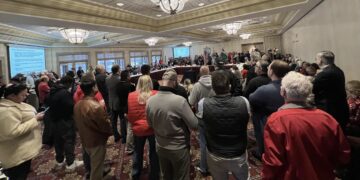Over the past few decades, Republicans and Democrats have become more and more sharply divided – not just ideologically, but also geographically. Democrats tend to do best in the nation’s urban areas, while Republicans find their strongest support in more rural areas. Now, a new Pew Research Center analysis of county-level presidential-voting data quantifies just how dominant Democrats are in big cities – and analysts say this dominance will present a tough challenge to Donald Trump this November.
In 2008 Barack Obama won 88 of the 100 most populous counties; in his re-election bid four years later he won 86. Given Obama’s popularity among racial and ethnic minorities and young adults – who tend to cluster in big cities – that’s not altogether surprising.
According to PEW, most of the biggest counties have become more presidentially Democratic over the past four decades. For example, Illinois’ DuPage County, a longtime GOP stronghold, went for Gerald Ford by more than 40 percentage points in 1976 (68.8% to 28.3%). But it went for Obama twice, by nearly 11 percentage points in 2008 and by 1.1 percentage points in 2012.
One caveat is in order about Democrats’ big-county advantage: Even as their grip on these counties has tightened, they carry less electoral heft than they used to. The 100 largest counties in 1976 together cast almost 44% of the total vote in that year’s presidential election; in 2012, the top-100 vote share had slipped to 39.4%.
In recent decades Americans have increasingly sorted themselves politically. A 2014 Pew Research Center report on political polarization found that liberals are about twice as likely as conservatives to live in urban areas, while conservatives are more concentrated in rural areas.








